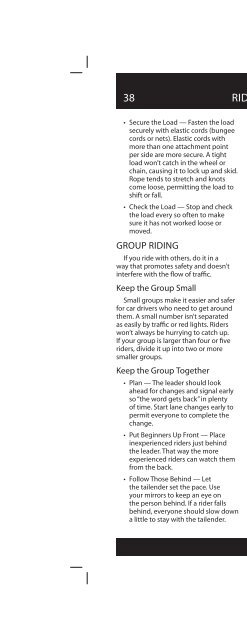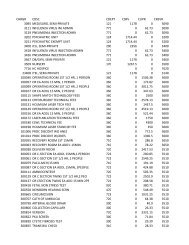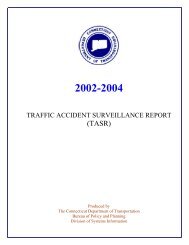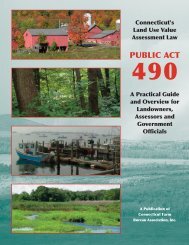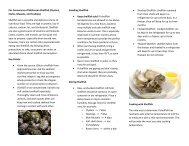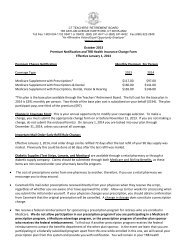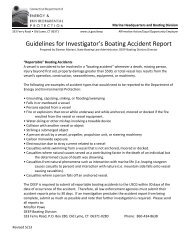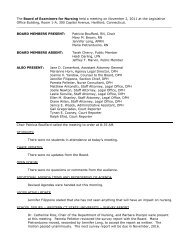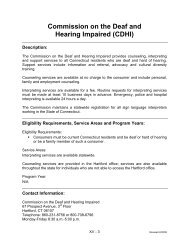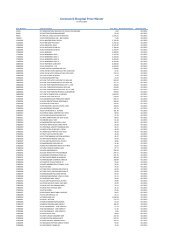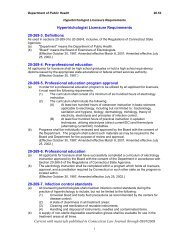The Connecticut Motorcycle Operator's Manual - CT.gov
The Connecticut Motorcycle Operator's Manual - CT.gov
The Connecticut Motorcycle Operator's Manual - CT.gov
Create successful ePaper yourself
Turn your PDF publications into a flip-book with our unique Google optimized e-Paper software.
38 RIDE WITHIN YOUR ABILITIES<br />
• Secure the Load — Fasten the load<br />
securely with elastic cords (bungee<br />
cords or nets). Elastic cords with<br />
more than one attachment point<br />
per side are more secure. A tight<br />
load won’t catch in the wheel or<br />
chain, causing it to lock up and skid.<br />
Rope tends to stretch and knots<br />
come loose, permitting the load to<br />
shift or fall.<br />
• Check the Load — Stop and check<br />
the load every so often to make<br />
sure it has not worked loose or<br />
moved.<br />
GROUP RIDING<br />
If you ride with others, do it in a<br />
way that promotes safety and doesn’t<br />
interfere with the fl ow of traffi c.<br />
Keep the Group Small<br />
Small groups make it easier and safer<br />
for car drivers who need to get around<br />
them. A small number isn’t separated<br />
as easily by traffi c or red lights. Riders<br />
won’t always be hurrying to catch up.<br />
If your group is larger than four or fi ve<br />
riders, divide it up into two or more<br />
smaller groups.<br />
Keep the Group Together<br />
• Plan — <strong>The</strong> leader should look<br />
ahead for changes and signal early<br />
so “the word gets back” in plenty<br />
of time. Start lane changes early to<br />
permit everyone to complete the<br />
change.<br />
• Put Beginners Up Front — Place<br />
inexperienced riders just behind<br />
the leader. That way the more<br />
experienced riders can watch them<br />
from the back.<br />
• Follow Those Behind — Let<br />
the tailender set the pace. Use<br />
your mirrors to keep an eye on<br />
the person behind. If a rider falls<br />
behind, everyone should slow down<br />
a little to stay with the tailender.<br />
• Know the Route — Make sure<br />
everyone knows the route. <strong>The</strong>n, if<br />
someone is separated they won’t<br />
have to hurry to keep from getting<br />
lost or taking a wrong turn. Plan<br />
frequent stops on long rides.<br />
Keep Your Distance<br />
Maintain close ranks but at the same<br />
time keep a safe distance to allow each<br />
rider in the group time and space to<br />
react to hazards. A close group takes<br />
up less space on the highway, is easier<br />
to see and is less likely to be separated.<br />
However, it must be done properly.<br />
Don’t Pair Up — Never operate<br />
directly alongside another rider. <strong>The</strong>re is<br />
no place to go if you have to avoid a car<br />
or something on the road. To talk, wait<br />
until you are both stopped.<br />
Staggered Formation — This is<br />
the best way to keep ranks close yet<br />
maintain an adequate space cushion. <strong>The</strong><br />
leader rides in the left side of the lane,<br />
while the second rider stays one second<br />
behind in the right side of the lane.<br />
STAGGERED FORMATION


